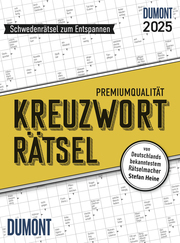Student Success in College (E-Book, PDF)
Student Success in College
eBook - Creating Conditions That Matter
Bibliographische Informationen
Format: Digitale Rechteverwaltung: Adobe DRM
Beschreibung
Autorenportrait
Jillian Kinzie is associate director of the NSSE Institute for Effective Educational Practice and project manager of the Documenting Effective Educational Practice (DEEP) Initiative.
John H. Schuh is distinguished professor of educational leadership at Iowa State University in Ames, Iowa.
Elizabeth J. Whitt is professor in the College of Education, and director of Student Success Initiatives in the Office of the Provost, at the University of Iowa.
Inhalt
Preface ix
Part One: Introduction 1
1. Student Engagement: A Key to Student Success 7
Why Effective Educational Practice Matters 8
Documenting Effective Educational Practice (DEEP) 10
Keep in Mind 18
No Single Blueprint for Student Success 20
Part Two: Properties and Conditions Common to Educationally Effective Colleges 23
2. Living Mission and Lived Educational Philosophy 25
Mission 25
Operating Philosophy 27
Meet the DEEP Schools 28
Making Space for Difference 59
Mission Clarity: Tell Me AgainWhat Are We About? 59
Summary 61
Whats Noteworthy about a Living Mission and Lived Educational Philosophy 62
3. An Unshakeable Focus on Student Learning 65
Valuing Undergraduates and Their Learning 66
Experimenting with Engaging Pedagogies 69
Demonstrating a Cool Passion for Talent Development 77
Making Time for Students 80
Feedback: Improving Performance, Connecting Students and Faculty 84
Summary 88
Whats Noteworthy about Focusing on Student Learning 88
4. Environments Adapted for Educational Enrichment 91
Using the Setting for Teaching and Learning 93
Creating Human-Scale Learning Environments 106
Whats Noteworthy about Adapting Environments for Educational Advantage 108
5. Clear Pathways to Student Success 109
Acculturation 111
What New Students Need to Know 113
Affirming Diversity 116
Alignment 123
Whats Noteworthy about Creating Clear Pathways to Student Success 131
6. An Improvement-Oriented Ethos 133
Realizing the Vision: The University of Texas at El Paso 134
Making Student Success a Priority: Fayetteville State University 136
Investing in Undergraduate Education: The University of Michigan 138
Fostering Institutional Renewal: University of Maine at Farmington 140
Championing Learning Communities: Wofford College 142
Creating a Campuswide Intellectual Community: Ursinus College 145
Positive Restlessness 146
Curriculum Development 150
Data-Informed Decision Making 152
Summary 155
Whats Noteworthy About Innovating and Improving 156
7. Shared Responsibility for Educational Quality and Student Success 157
Leadership 158
Faculty and Staff Diversity 163
Student Affairs: A Key Partner in Promoting Student Success 164
Fostering Student Agency 167
The Power of One 170
Whats Noteworthy about Sharing Responsibility for Educational Quality 171
Part Three: Effective Practices Used At Deep Colleges and Universities 173
8. Academic Challenge 177
High Expectations for Student Performance 178
Extensive Writing, Reading, and Class Preparation 182
Rigorous Culminating Experience for Seniors 188
Celebrations of Scholarship 190
Summary 191
9. Active and Collaborative Learning 193
Learning to Learn Actively 194
Learning from Peers 195
Learning in Communities 198
Serving and Learning in the Local Community 200
Responding to Diverse Learning Styles 204
Summary 206
10. Student-Faculty Interaction 207
Accessible and Responsive Faculty 208
Academic Advising 213
Undergraduate Research 214
Electronic Technologies 216
Summary 217
11. Enriching Educational Experiences 219
Infusion of Diversity Experiences 220
International and Study Abroad 226
Electronic Technologies 230
Civic Engagement 233
Internships and Experiential Learning 236
Cocurricular Leadership 238
Summary 239
12. Supportive Campus Environment 241
Transition Programs 242
Advising Networks 245
Peer Support 248
Multiple Safety Nets 251
Special Support Programs 252
Residential Environments 257
Summary 260
Part Four: Summary and Recommendations 263
13. Principles for Promoting Student Success 265
Tried and True 266
Sleepers 275
Fresh Ideas 284
Perennial Challenges 287
Summary 294
14. Recommendations 295
Organizing for Student Success 297
Conclusion 316
Epilogue 319
Advancing the Student Success Agenda 322
Drifting Off Course 330
Sustaining Effective Educational Practice 334
Campus Culture and Sustaining High Performance 341
Final Word 342
References 345
Appendices 353
Appendix A: Research Methods 353
Appendix B: Project DEEP Research Team 363
Appendix C: National Survey of Student Engagement 373
Index 375
E-Book Informationen
„eBooks“ sind digitale Bücher. Um eBooks lesen zu können, wird entweder eine spezielle Software für Computer, Tablets und Smartphones oder ein eBook-Reader benötigt. Da es eBooks in unterschieldichen Formaten gibt, gilt es, folgendes zu beachten.
Von uns werden digitale Bücher in drei Formaten ausgeliefert. Die Formate sind EPUB mit DRM (Digital Rights Management), EPUB ohne DRM und PDF. Bei den Formaten PDF und EPUB ohne DRM müssen Sie lediglich prüfen, ob Ihr eBook-Reader kompatibel ist. Wenn ein Format mit DRM genutzt wird, besteht zusätzlich die Notwendigkeit, dass Sie einen kostenlosen Adobe® Digital Editions Account besitzen. Wenn Sie ein eBook, das Adobe® Digital Editions benötigt, herunterladen, erhalten Sie eine ASCM-Datei, die zu Digital Editions hinzugefügt und mit Ihrem Account verknüpft werden muss. Einige eBook-Reader (zum Beispiel PocketBook Touch) unterstützen auch das direkte Eingeben der Login-Daten des Adobe Accounts – somit können diese ASCM-Dateien direkt auf das betreffende Gerät kopiert werden.
Da eBooks nur für eine begrenzte Zeit – in der Regel 6 Monate – herunterladbar sind, sollten Sie stets eine Sicherheitskopie auf einem Dauerspeicher (Festplatte, USB-Stick oder CD) anlegen. Außerdem ist die Anzahl der Downloads auf maximal 5 begrenzt.
Weitere Artikel aus der Kategorie "Pädagogik/Bildungswesen"
Lieferbar innerhalb 24 Stunden






